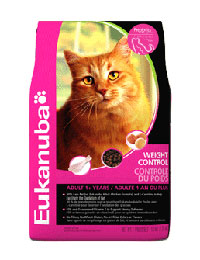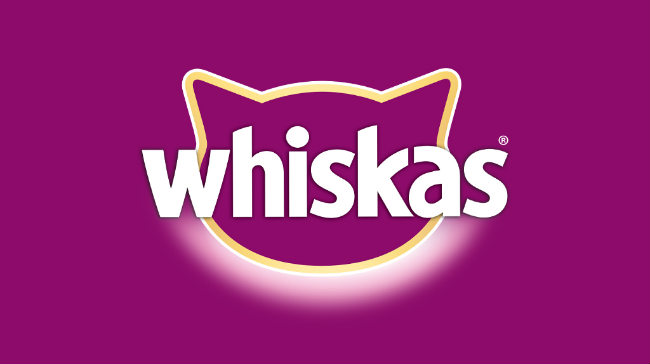Eukanuba is a pet food company that specializes in the manufacture of dog and cat food. One of the products under the Eukanuba brand is the Mature Care Dry Cat Food formula. According to the company, this is a formula suitable for cats above the age of 7. This pet formula is meant to help your cat with the adjusting metabolism that comes with aging. This pet formula provides your cat with special nutrition that is said to keep your cat healthier for longer.
With all that this product promises, it is natural to wonder if it is the right formula for your feline friend. Our Eukanuba Mature Dry Cat Food review will begin with an overview and analysis of the ingredients.
Ingredients in Eukanuba Mature Care Dry Cat Food Review
Chicken By-Product Meal, Chicken, Corn Meal, Corn Grits, Dried Beet Pulp, Animal Fat (preserved with mixed Tocopherols, a source of Vitamin E), Dried Egg Product, Natural Flavor, Potassium Chloride, Fructooligosaccharides, DL-Methionine, Salt, Brewers Dried Yeast, Choline Chloride, Fish Oil (preserved with mixed Tocopherols, a source of Vitamin E), Vitamin E Supplement, Taurine, Vitamins (Ascorbic Acid, Niacin, Vitamin A Acetate, Biotin, Calcium Pantothenate, Thiamine Mononitrate (source of vitamin B1), Pyridoxine Hydrochloride (source of vitamin B6), Calcium Carbonate, Vitamin B12 Supplement, Inositol, Riboflavin Supplement (source of vitamin B2), Folic Acid, Vitamin D3 Supplement), Minerals (Manganese Sulfate, Zinc Oxide, Copper Sulfate, Cobalt Carbonate, Potassium Iodide), Rosemary Extract.
Top 5 Ingredients Analysis
Chicken By-Product Meal
While this ingredient does provide a high amount of meat protein, this meat source is considered to be of lower quality than many other meat sources. Chicken By-Product Meal is produced through a process of cooking, drying and separation of fats and proteins from animal carcasses. It contains a dehydrated combination of meat (or cuts or parts) including lungs, spleen, kidneys, brain, livers, blood, bone, necks, undeveloped eggs and intestines. Usually, by-products are the “left overs” that can’t be used for human food consumption. The greatest fault of this ingredient is the same trait that makes it so affordable and so commonly found in pet foods. The unpredictability of what might (or might not) be included.
Chicken
Chicken is a very popular ingredient for pet food and in this case, they are referring to whole chicken. This is a very high quality meat source and we are pleased to see it listed. However, whole chicken loses about 80% of its content during the cooking process since the majority of whole chicken is water. After the cooking process is complete, the amount of whole chicken remaining is substantially reduced. Therefor, while whole chicken is a great source of meat protein, this ingredient alone is not enough to provide sufficient levels of meat protein in a cats diet.
Corn Meal
Considered a low quality ingredient, corn meal is usually used as a “filler ingredient” but provides almost no nutritional value to cats. This ingredient is also a known allergy causing ingredient for many cats. We aren’t all that thrilled to see this ingredient listed.
Corn Grits
Many forms of corn are found in pet foods including corn grits. About 85% of all corn grown in the United States is genetically modified (GMO). Since cats by nature are carnivores, this ingredient does not provide much nutritional value if any, although it does add calories to the food. Corn grits can be considered a very low quality ingredient.
Dried Beet Pulp
Beet pulp is a by-product from the processing of sugar beet and is a source of fiber and energy. It is popular among many pet food companies due to its high availability and low price. The most common complaint about this ingredient is that it causes digestion problems, most commonly a very hard stool or diarrhea. It has also been known to cause bloat in some dogs and cats which can be very serious if left unchecked.
Additional Ingredients Of Interest In Eukanuba Mature Care Cat Food
Dried Egg Product
Derived from shell free eggs, this is a cheaper source of protein used in place of higher quality meat proteins. Normally, this ingredient is derived from waste products associated with the egg industry or egg products that have been deemed unfit for human consumption.
Brewers Dried Yeast
Brewers dried yeast is made from a single-celled fungus, called Saccharomyces cerevisiae. It is a very rich source of B vitamins and supplies minerals and amino acids. It is known to support a normal healthy coat. This is also an old remedy for flea and tick protection. This ingredient is generally a by-product of alcohol production and there are no major health risks associated with this ingredient.
Taurine
Taurine is an essential amino acid that is critical for normal heart muscle function, vision, and reproduction in cats. Since cats are unable to create proper levels of taurine in their body naturally, it must be supplemented in their food. That’s why you’ll see this ingredient listed for so many different cat food blends. For cat foods that contain enough high quality animal based proteins, a taurine supplement may not be needed. However, most cat foods will need to add in additional taurine in the form of a supplement to the food. Even when included as a supplement instead, there is very low to almost zero health risk associated with this ingredient. In fact, a lack of taurine can cause a slew of issues, so it’s very important to make sure your cat is receiving enough taurine in his or her diet.
Allergy Risks Associated With Eukanuba Mature Cat Food
Eukanuba Mature Care Cat food contains a lot of potentially allergy causing ingredients, including some of the main offenders like corn. It is important to avoid feeding your cat on this product if it is allergic to corn or corn by-products. This food is not recommended for cats with sensitive stomaches or digestion issues.
Poor Quality Ingredients Commonly Found In Cat Food
Gluten – This ingredient is associated with causing allergies in cats. It is also known to raise sugar levels in cats. Over time, this can lead to diabetes. Gluten refers to the proteins found in wheat endosperm which is a type of tissue produced in seeds that’s ground to make flour. Many pet food manufactures will use this ingredient to help boost the protein percentage of the food.
Animal by-product – One of the worst meat ingredients found in pet food today is animal by product. It’s true that this ingredient provides a very high amount of meat protein that cats need to thrive. However, animal by products are considered to be the lowest form of meat and it isn’t even approved for human consumption. Animal by-products are carcasses and parts of carcasses from slaughterhouses, animal shelters, zoos and veterinarians, and products of animal origin not intended for human consumption, including catering waste. Legally, this ingredient can even contain roadkill or euthanized animals. This ingredient may also contain what is called “4D meat” which is what the USDA (United States Department of Agriculture) calls cattle that is dead, dying, disabled or diseased. This meat is considered unfit for human consumption, but is typically found in many pet food products. This is not something we recommend you feed your cat or any other pet.
Artificial coloring and flavoring – Both artificial and natural flavor ingredients are considered to be lower quality ingredients. Artificial flavor is usually derived from petroleum. Most have not been studied for safety or toxicity. They are all synthesized chemicals that don’t even have common names. Most artificial flavors actually contain many chemical ingredients, not just one. Many of those chemicals are volatile. Both natural and artificial flavors are chemical based ingredients and we don’t get all that excited when we see either one of those ingredients listed. Both of these ingredients have potential allergy risks and other possible health problems in cats.
We also find it quite irresponsible to include artificial coloring in pet food since the health concerns about these added colors are so controversial. Your cat does not care what color their food is and the only reason artificial coloring is added to this product is for marketing purposes. It makes the food look better to you YOU, the human consumer. Of course, many cat food brands are very defensive about their use of food coloring. Here is an example of how the Purina brand defends their use of fool coloring. Notice how even in their explanation, there is no perceived benefit to these ingredients other than changing the color. There is also a growing amount of evidence to suggest food coloring may be linked to cancer in not just dogs and cats, but also humans. Here is an article that explains a bit further. In short, since there is some controversy surrounding this ingredient, we find it a bit strange that cat food companies would spend money adding this ingredient into a product when at best, it has zero nutritional value for your cat and only has marketing value. At worse, it could pose health risks. It just doesn’t seem like the risk of including this ingredient is worth it.
Fortunately, Eukanuba Mature Care Cat Food does not contain these controversial ingredients.
Conclusion
While we aren’t all that pleased with this cat food, many cat owners have given excellent ratings about this food. All cats are different and your older cat may do great on this food. That being said, we are a bit discouraged to see some low quality meat sources as well as the use of corn. It seems strange to us that Eukanuba would use so many potentially allergy causing ingredients in a senior food. Additionally, corn can be difficult to digest for many cats and again, it seems strange this ingredient would be used in a food designed for mature cats. What do you think? Feel free to let us know in the comments section below.
Judging by the ingredients alone, we believe Eukanuba Mature Care Cat Food is a below average cat food blend.




 Are you looking for weight control foods for your cat? If you are a cat owner, you probably can attest to the fact that it is quite hard to get an effective weight control cat formula. This is because the cat food market is awash with products that hardly ever live up to their promise.
Are you looking for weight control foods for your cat? If you are a cat owner, you probably can attest to the fact that it is quite hard to get an effective weight control cat formula. This is because the cat food market is awash with products that hardly ever live up to their promise.

